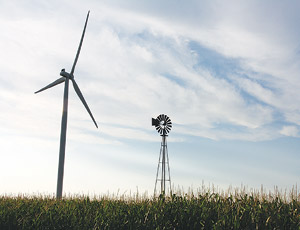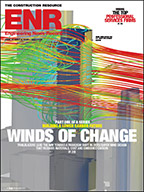Deere & Co.’s recent agreement with Exelon Corp. to offload its wind-farm division for $900 million comes at a time when construction activity in wind power is anything but breezy.

“The overall economy has affected this market,” says Tom Wacker, senior vice president of M.A. Mortenson Co., Minneapolis. “But the business has very much experienced a boom-and-bust cycle, and that’s because of the lack of consistent federal legislation.”
During 2010’s first half, Mortenson energized about 40% of new wind power in the U.S., it reports, but overall data depict an industry sector that is in deep year-over-year declines. In total, contractors built 1,239 MW of wind power, representing 57% fewer installations compared to the first half of 2008 and 71% fewer than the same period last year, according to the Washington D.C.-based American Wind Energy Association.
The group is calling on Congress to pass a nationwide renewable-electricity standard, which more than half the country already has adopted at the state level. “The U.S. wind energy industry will never reach its full potential, unless and until Congress passes legislation setting a robust minimum standard,” wrote the Governors’ Wind Energy Coalition in a Sept. 13 letter to Senate Majority Leader Harry Reid (D-Nev.).
Despite wind power’s inconsistent funding, the potential for profits attracts newcomers. Deere formally entered the business in 2005 as a way to help landowners—some of whom were already heavy-equipment clients—finance and develop their properties into feasible wind farms. But the Moline, Ill.-based manufacturer ran into trouble in 2007 when its turbine suppler, Suzlon Energy Ltd., Pune, India, discovered a defect in its 2.1-MW turbines, which were forming cracks about 20 ft from the composite blade’s root—a spot, known as the “transition area,” at which the blade tapers into the hub. Suzlon spent $100 million fixing its entire fleet of 417 turbines in the U.S. and Australia by slapping on extra fiberglass plies to strengthen the blades.
In selling John Deere Renewables LLC, Sam Allen, the parent firm’s CEO, says, “[Deere] has concluded that the company’s resources are best invested in growing our core equipment businesses around the world.” Deere gets $860 million, including an option for $40 million more if 230 MW of planned projects get off the ground. Deere’s net payout after taxes will be around $700 million, estimates Mark Koznarek, an analyst with Cleveland Research Co.
Exelon is using the deal, expected to close in the fourth quarter of this year, to break into wind energy. The Deere portfolio includes 735 MW of operating wind farms, 75% of which were developed through long-term power contracts.
Though wind power may look stalled, more tax credits are set to expire this year, which will likely spur another short-term boom this fall. “We are somewhat used to that up-and-down flow,” says Wacker.



Post a comment to this article
Report Abusive Comment